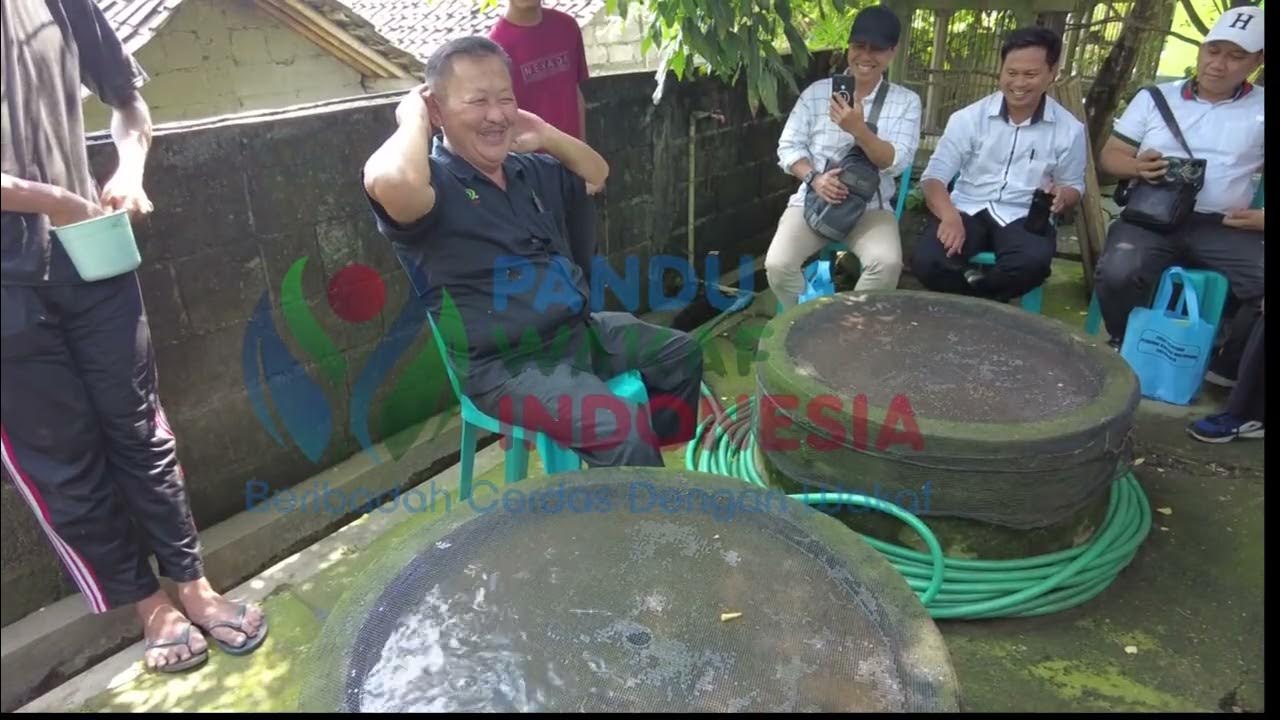Budikdamber lele sederhana || panduan lengkap budikdamber dijamin anti gagal
Summary
TLDRThe video script introduces the Budik Damber technique, a space-efficient and cost-effective method for catfish cultivation using buckets. It combines with biofloc or race systems and can be integrated with aquaponics for gardening. The process involves water preparation with bacteria, selecting healthy seeds, acclimatizing them, and providing proper care and feeding. The video emphasizes the importance of using the right bacteria for water decomposition and fish digestion, offering a detailed guide for beginners in freshwater fish farming.
Takeaways
- 🌐 The Budik Damber technique is a modern approach to fish farming that uses simple media like buckets, making it accessible to cultivate fish in small spaces.
- 💧 Water preparation is crucial, involving filling a bucket with clean water, adding decomposing bacteria, and aerating for 24-48 hours to promote bacterial growth.
- 🐟 Selecting healthy and responsive fish seeds from nearby sources minimizes stress during transportation and ensures better acclimatization.
- 🌡 Acclimatization of fish seeds is essential, done by introducing them to new water conditions gradually to prevent stress from temperature changes.
- 🍽️ Feeding fish with probiotics or wet feed is recommended to enhance digestion and overall fish health.
- 🔁 Regular monitoring of water conditions and performing water changes if necessary helps maintain a healthy environment for the fish.
- 🌱 The Budik Damber method can be integrated with aquaponics, allowing for simultaneous fish farming and gardening.
- 💹 This technique is cost-effective, with initial setup costs significantly lower compared to traditional pond or tarpaulin-based catfish cultivation.
- 📈 The video provides a detailed guide for beginners, ensuring they understand the steps for successful Budik Damber fish farming.
- 🔗 For more detailed information and initial capital costs, viewers are directed to click on the provided link in the video description.
Q & A
What is the Budik Damber technique mentioned in the script?
-The Budik Damber technique is a method of fish cultivation using simple media like buckets, which does not require large areas of land and can be combined with biofloc systems, race systems, or aquaponics for efficient land use.
How does the Budik Damber technique compare in cost to traditional pond catfish cultivation?
-The Budik Damber technique is more cost-effective than traditional pond catfish cultivation. For the initial capital of buying 1,000 seeds, building ponds, and buying facilities for traditional methods can cost around one million to one million 500,000, while the cost of the Budik Damber itself is approximately 300,000.
What are the advantages of using the Budik Damber technique for fish cultivation?
-The advantages include not requiring large areas of land, being cost-effective, and the ability to combine with other systems like aquaponics for additional gardening benefits.
What is the first step in the Budik Damber fish cultivation process as described in the script?
-The first step is water preparation, which involves filling a bucket with clean water, adding decomposing bacteria, and using an aerator to speed up the growth and development of these bacteria.
How long should the water be left to sit after adding bacteria and an aerator?
-The water should be left to sit for 24 hours, or twice, to allow the bacteria to grow and develop.
What are the characteristics to look for when choosing fish seeds for the Budik Damber technique?
-Healthy seeds should be chosen based on their movement, responsiveness, and agility, and they should not hang on the surface. It's also recommended to get seeds from the nearest place to minimize stress during transportation.
What is the recommended time for stocking the seeds in the Budik Damber system?
-The best time for stocking seeds is in the morning or early afternoon to minimize stress during acclimatization to new water conditions.
How many fish seeds should be sown in a 100-liter bucket capacity according to the script?
-You can sow 200 or 100 fish in a 100-liter bucket capacity, depending on the desired density and the potential for later division into two buckets when the fish reach their teenage years.
What is the importance of acclimatizing the seeds before spreading them in the Budik Damber system?
-Acclimatization is important to prevent stress in the fish when they experience changes in water temperature, ensuring a smoother transition and better survival rates.
How should the feed be prepared and given to the fish in the Budik Damber system?
-The feed should be wetted with probiotics or water to allow it to expand before feeding. It's important not to overfeed, and if using probiotic feed, wait a day or two after wetting to allow the probiotics to work more optimally.
What are the two types of bacteria used in the Budik Damber fish cultivation, and how do they differ?
-There are two types of bacteria used: one works for water decomposition and the other for fish digestion. It's crucial not to confuse their applications as they serve different purposes in the fish farming process.
What maintenance activities are suggested for the Budik Damber system?
-Regular monitoring of the water condition and fish health is suggested. If needed, perform sorting or water changes by removing 50% of the water and adding new water with probiotics.
Outlines

このセクションは有料ユーザー限定です。 アクセスするには、アップグレードをお願いします。
今すぐアップグレードMindmap

このセクションは有料ユーザー限定です。 アクセスするには、アップグレードをお願いします。
今すぐアップグレードKeywords

このセクションは有料ユーザー限定です。 アクセスするには、アップグレードをお願いします。
今すぐアップグレードHighlights

このセクションは有料ユーザー限定です。 アクセスするには、アップグレードをお願いします。
今すぐアップグレードTranscripts

このセクションは有料ユーザー限定です。 アクセスするには、アップグレードをお願いします。
今すぐアップグレード関連動画をさらに表示

Lele Dalam Ember Minim Lahan | WHAT??? (20/09/23)

BUDIDAYA IKAN LELE SISTEM KOCOR

Budidaya Ikan dan Sayur Dalam Ember | BUDIKDAMBER #001

Prof.,Dr. Gembong memberikan edukasi bagaimana cara budidaya ternak lele tidak berbau

CARA TERNAK BUDIDAYA IKAN LELE MENGGUNAKAN GALON BEKAS SKALA RUMAHAN

MACAM-MACAM SISTEM & TEHNIK HIDROPONIK
5.0 / 5 (0 votes)
